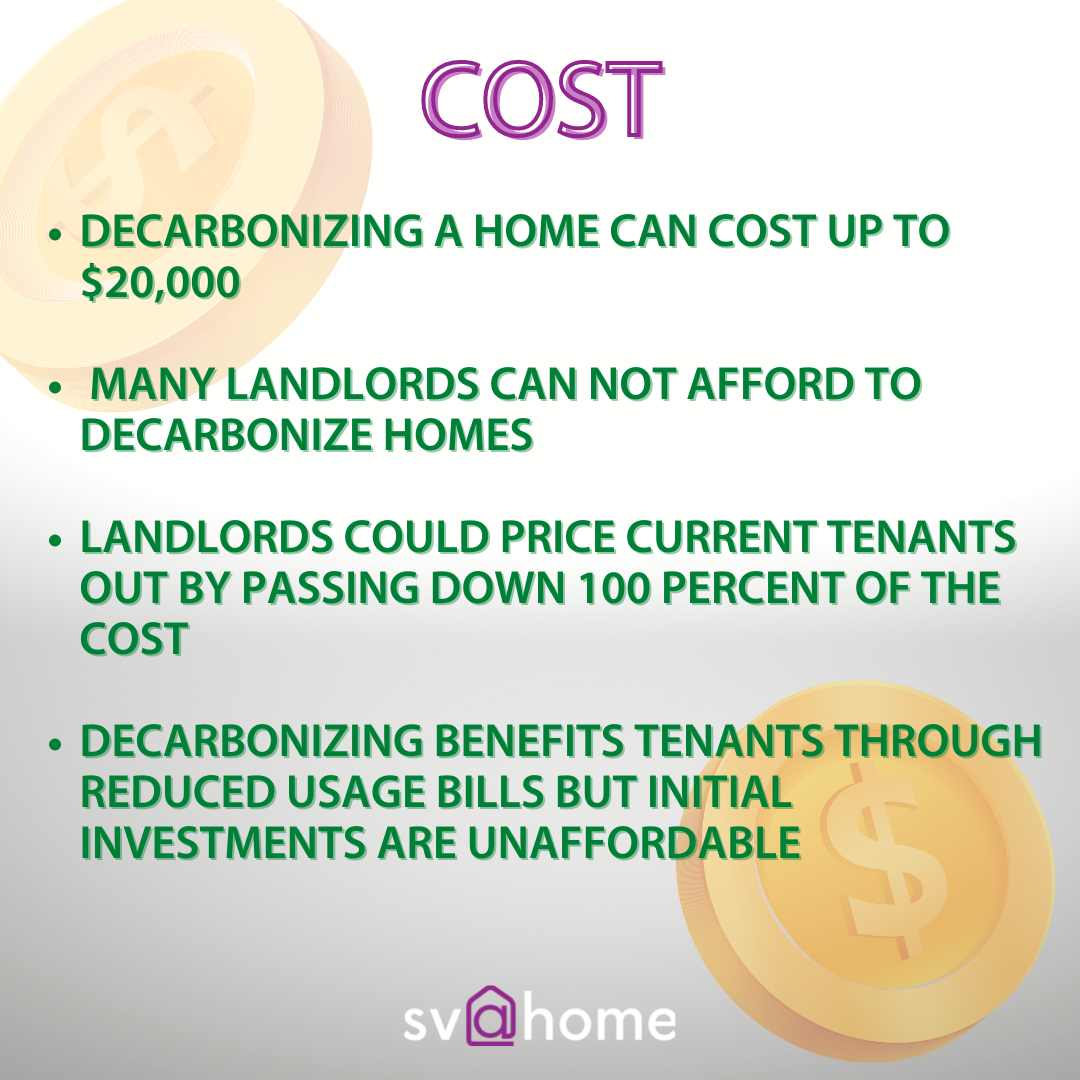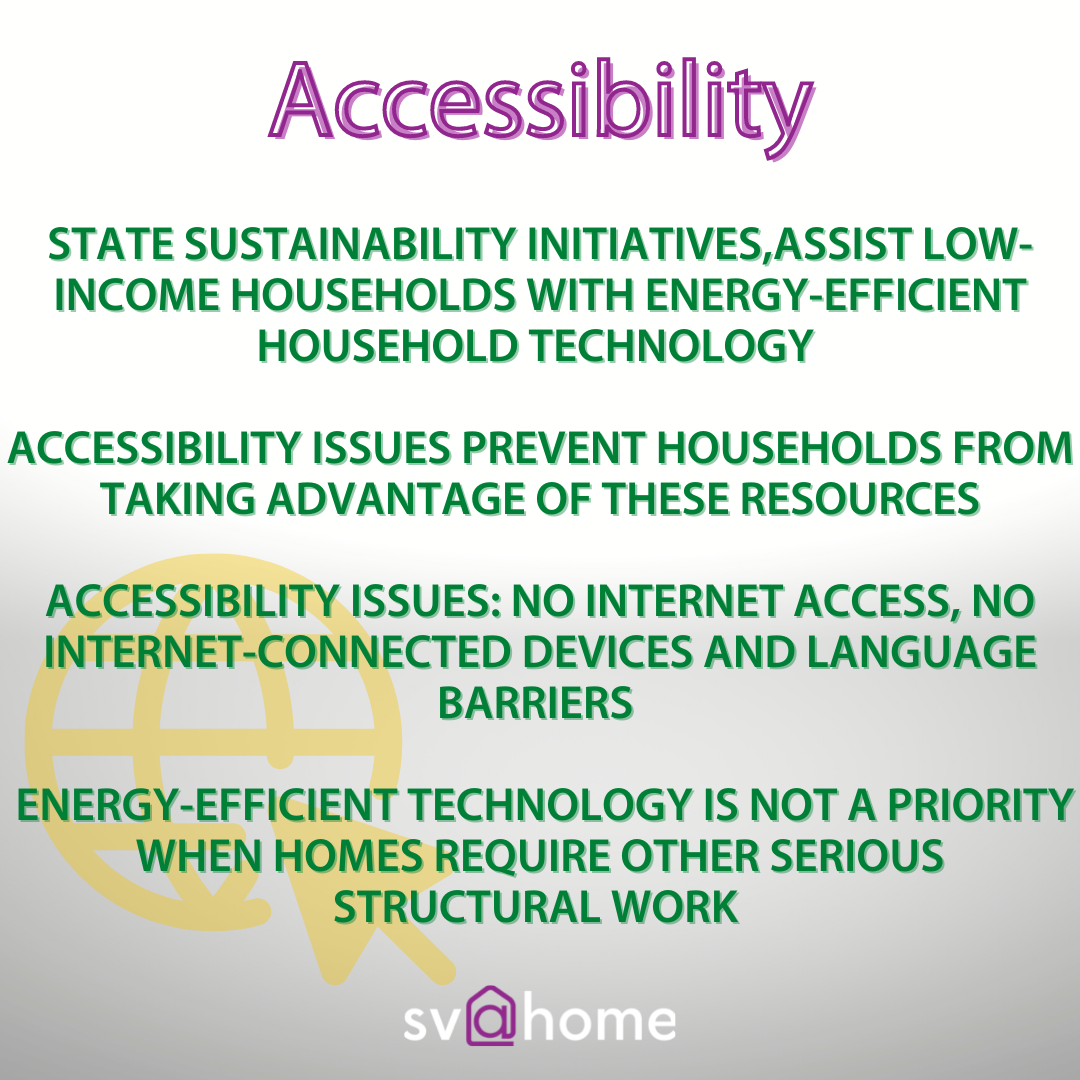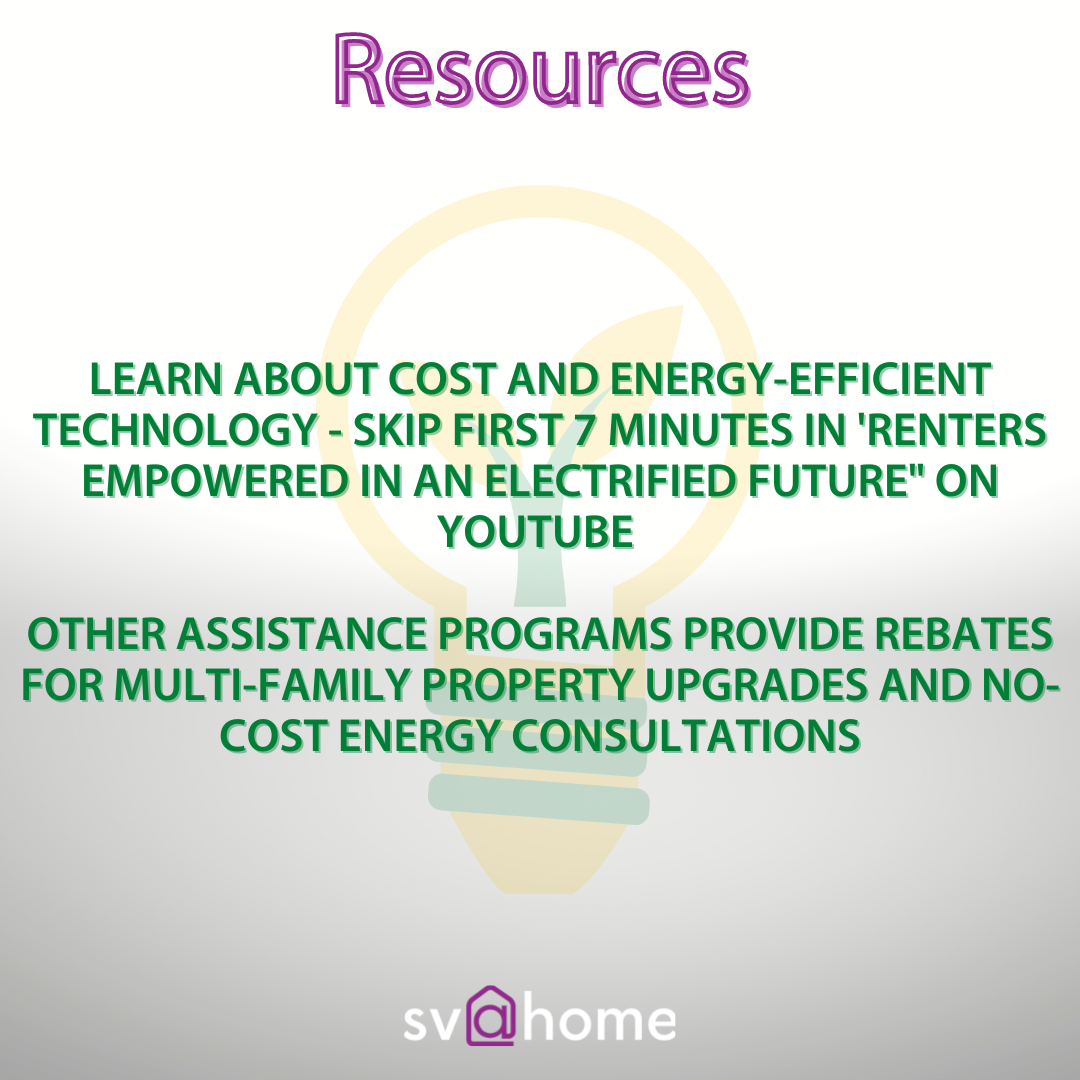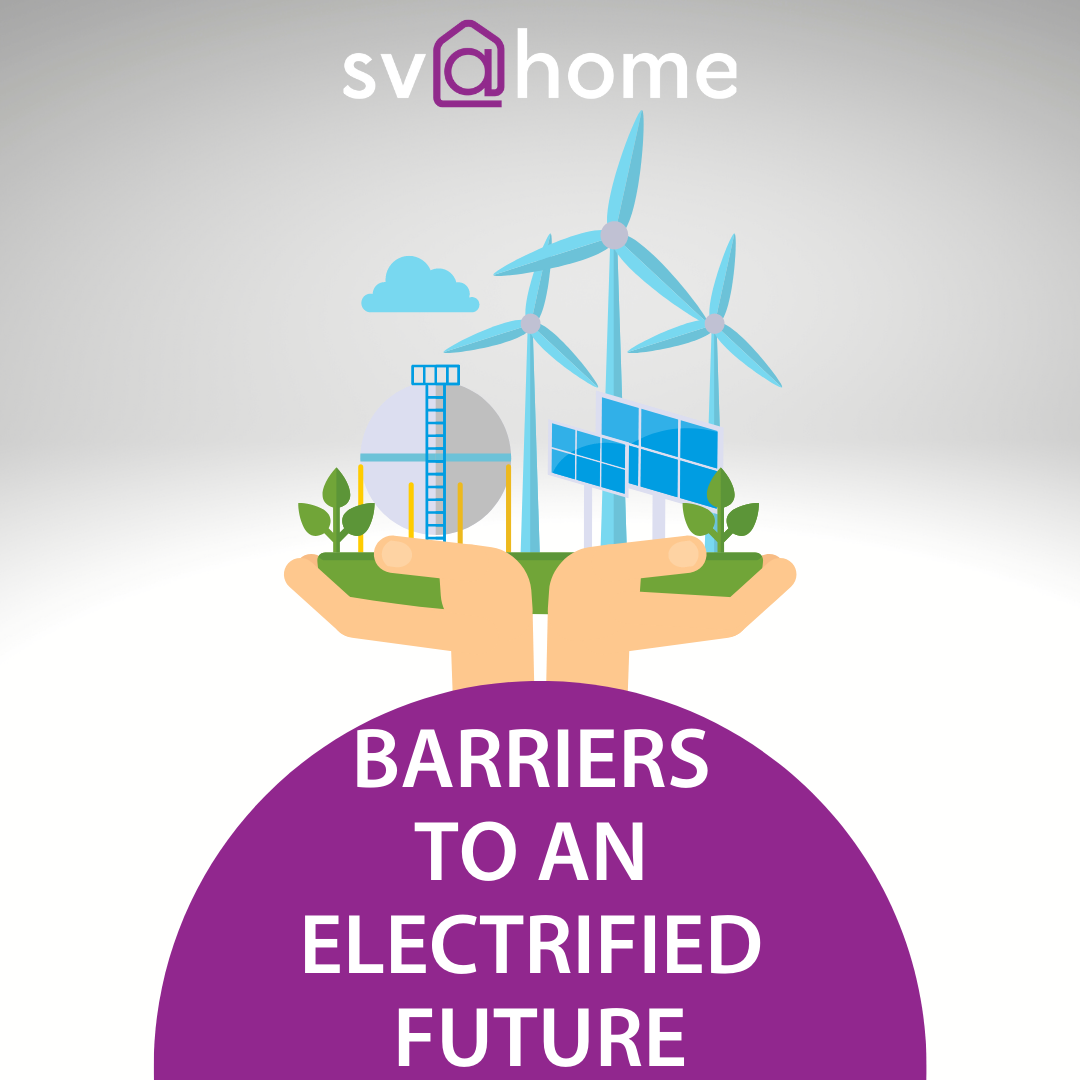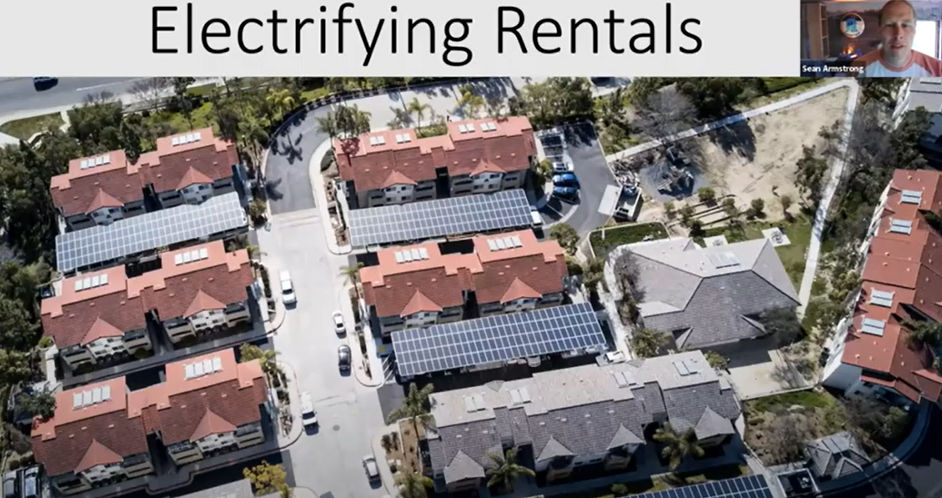
{Editor’s note: SV@Home asked our housing policy interns to watch recordings of May’s Affordable Housing Month and extract five essential points from each to write in a blog post. What follows is a contribution from Aurion Wiley-Green and her observations from ‘Renters Empowered in an Electrified Future’ event. Enjoy!}
Climate change is a rapidly growing global issue. Unfortunately, low-income households and renters may be more likely to experience negative consequences of climate change due to the lack of agency and ability to change their homes.
Climate activists and local governments need to understand the many challenges renters face in equipping their homes with energy-efficient technology to provide resources and support. In addition, it is equally important for both owners and renters to know about the resources available to assist them in updating their property in a cost-efficient way. Build It Green and SV@Home partnered during Affordable Housing Month in 2022 to present “Renters Empowered in an Electrified Future” to equip community members with this knowledge. The event featured a panel that included Farhad Farahmand of TRC, Sean Armstrong of Redwood Energy, Chelsea Kirk of Strategic Actions for a Just Economy, and Ben Cooper of StopWaste, who provided both challenges and resources for renters to electrify their homes.
In South Los Angeles, Strategic Actions for a Just Economy conducted focus groups on decarbonization commissioned by the Climate Emergency Mobilization Office to understand the true concerns of renters of the area. The information from the groups made it clear that although many renters would like to decarbonize, there are challenges to doing so. These challenges include:
Cost. The cost of fully decarbonizing a home can be up to $20,000. Many landlords can not afford to fully decarbonize homes. However, the owners that can afford to decarbonize often find that the initial investment is so high that they face the possibility of pricing out current tenants. On the other hand, landlords that do decide to decarbonize homes can pass up to 100 percent of the cost down to tenants, who might not be able to afford it. While many of the updates may benefit tenants through reduced usage bills, they often can not afford the initial investment.
Accessibility. Under California’s sustainability initiatives, many resources have been created to assist low-income households with energy-efficient household technology. However, accessibility issues such as lack of internet access, the lack of devices that support internet browsing, and language barriers prevent individuals from taking advantage of these resources.
Many tenants that need energy-efficient resources live in homes that need costly work. Therefore, energy-efficient technology is not a priority when other serious work needs to be done. Current tenants may be priced out or displaced if these repairs are made.
Armstrong and Cooper shared important resources that could significantly cut costs by creating energy-efficient homes. To learn about cost and energy-efficient technology available for purchase, skip 7 minutes in Renters Empowered in an Electrified Future. Other funded assistance programs, such as the Bay Area Multifamily Building Enhancement (BAMBE) program, provide rebates for multi-family property upgrades and no-cost energy consultations.
To minimize the adverse effects of climate change, everyone has to be a part of the solution. So tackling hurdles to energy efficiency for renters is important. Therefore, initiatives are necessary to support property owners and renters to safer and cleaner homes.
